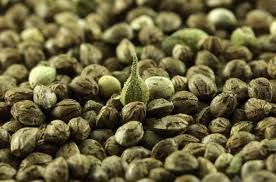Weed Seeds, When it comes to growing cannabis, the quality of your weed seeds can make a significant difference in the outcome of your harvest. Whether you’re a seasoned cultivator or a beginner looking to start your own grow, understanding the different types of weed seeds and how to choose the right ones is crucial. This guide will walk you through everything you need to know about weed seeds, from their types to tips for successful cultivation.
Types of Weed Seeds
- Regular Seeds
Regular weed seeds are the traditional type of seeds and are a mix of male and female plants. When grown, these seeds will produce both male and female plants. For most cultivators, only female plants are desired because they produce the buds rich in cannabinoids. Regular seeds can be a bit unpredictable, but they are often favored by growers who want to create their own breeding lines. - Feminized Seeds
Feminized weed seeds are specifically bred to produce only female plants. This eliminates the need to identify and remove male plants, which can save time and resources. Feminized seeds are a popular choice among growers looking for a more straightforward and reliable cultivation process. - Autoflowering Seeds
Autoflowering weed seeds are a type of cannabis seed that automatically transitions from the vegetative stage to the flowering stage, regardless of light conditions. This trait makes them ideal for growers who want a quicker turnaround or are growing in areas with varying light conditions. Autoflowering strains typically have a shorter lifecycle and can be harvested in as little as 8 to 12 weeks from germination. - Medical Strains
For those interested in growing cannabis for medicinal purposes, medical strains are specifically bred to contain high levels of cannabinoids like CBD or THC, tailored to various therapeutic needs. These seeds can help cultivate plants that provide specific medicinal benefits, whether for pain relief, anxiety, or other conditions.
Choosing the Right Weed Seeds
- Determine Your Goals
Before purchasing weed seeds, clarify your goals for cultivation. Are you growing for personal use, medicinal purposes, or commercial production? Your objectives will influence the type of seeds you should choose. - Consider Your Growing Environment
The environment where you plan to grow your cannabis—indoors, outdoors, or in a greenhouse—will impact your choice of seeds. Autoflowering seeds may be more suitable for indoor or variable conditions, while regular or feminized seeds might be preferred for controlled indoor setups or outdoor gardens. - Research Strain Characteristics
Each strain of cannabis has its own set of characteristics, including flavor, aroma, yield, and effects. Research strains that match your preferences and growing conditions. Some strains are more resistant to pests and diseases, which can be a critical factor in your decision. - Purchase from Reputable Sources
Ensure you buy weed seeds from reputable seed banks or suppliers. Quality seeds are essential for a successful grow, so choose vendors with positive reviews and a track record of providing reliable seeds.
Cultivating Weed Seeds
- Germination
Proper germination is the first step to a successful grow. Seeds should be kept in a warm, moist environment until they sprout. Techniques such as the paper towel method or soaking in water can help initiate germination. - Planting
Once the seeds have germinated, they should be planted in a suitable growing medium. This can be soil or a hydroponic system, depending on your preference. Ensure the seeds are planted at the correct depth and distance apart to allow for healthy growth. - Care and Maintenance
Regular care and maintenance are essential for healthy cannabis plants. This includes providing adequate light, nutrients, and water, as well as monitoring for pests and diseases. Pruning and training techniques can also help optimize yield and plant health. - Harvesting
Knowing when to harvest your cannabis plants is crucial for obtaining the best quality buds. The timing of the harvest depends on the strain and your desired effects. Look for signs such as the color of the trichomes and the overall maturity of the plant.
Conclusion
Choosing and growing weed seeds can be a rewarding experience, whether you’re cultivating for personal use or larger-scale production. By understanding the different types of seeds and their characteristics, as well as following best practices for cultivation, you can set yourself up for a successful and satisfying harvest. Happy growing!
You Might Also Like These:



